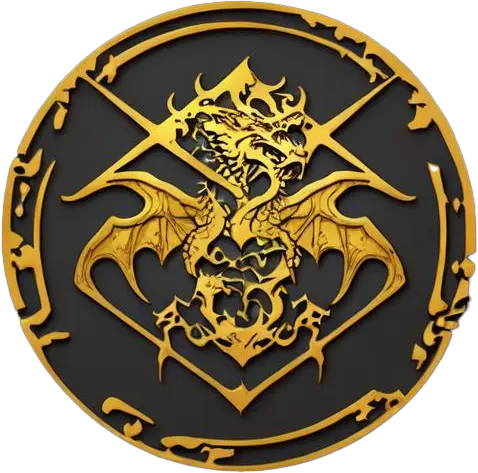Introduction to Dungeons & Dragons
Introduction to the Series
What is Dungeons & Dragons?
History of Dungeons & Dragons
- 1974: The original Dungeons & Dragons game is released by Tactical Studies Rules, Inc. (TSR). It was a groundbreaking game that combined elements of wargaming with fantasy storytelling.
- 1977-1979: Advanced Dungeons & Dragons (AD&D) is published, expanding the game's rules and complexity. This edition included the Player's Handbook, Dungeon Master's Guide, and Monster Manual.
- 1983: The "Basic Set" of D&D is released, making the game more accessible to new players with simplified rules.
- 1997: Wizards of the Coast acquires TSR and releases the third edition of D&D in 2000. This edition streamlined and unified the game's rules.
- 2003: The 3.5 edition is released, refining the third edition rules with numerous updates and clarifications.
- 2008: The fourth edition of D&D is published, introducing significant changes to gameplay, including a focus on tactical combat.
- 2014: The fifth edition (D&D 5e) is released, streamlining the rules and becoming the most popular version to date. This edition focuses on ease of play and narrative-driven gameplay.
Why Play Dungeons & Dragons?
- Creativity and Imagination: Players create their own characters, backstories, and strategies. The game encourages creative thinking and problem-solving. You can be whoever you want to be and do things only limited by your imagination.
- Social Interaction: D&D is a social game that fosters teamwork and camaraderie. It's a great way to spend time with friends and meet new people. The collaborative nature of the game helps build strong bonds between players.
- Endless Possibilities: No two games of D&D are the same. The DM and players collaboratively create a unique story with limitless potential. The game world can be as vast and varied as you like, with infinite adventures to embark on.
- Escape from Reality: Step into a fantastical world where magic, monsters, and epic quests await. D&D provides a mental break from everyday life and allows you to immerse yourself in a different reality.
Basic Terminology
- Dungeon Master (DM): The person who creates the world, narrates the story, and controls NPCs and monsters. The DM sets the scene, describes the actions of NPCs and monsters, and adjudicates the rules.
- Player Character (PC): A character created and controlled by a player. Each player designs their character's personality, abilities, and backstory.
- Non-Player Character (NPC): Characters controlled by the DM. NPCs can be allies, enemies, or neutral parties that interact with the PCs.
- Campaign: A series of adventures that take place in the same world and are part of a larger story. Campaigns can span many game sessions and follow an overarching plot.
- Adventure: A single storyline or quest within a campaign. Adventures can be completed in one or more sessions and often focus on a specific goal or mission.
- Session: A single meeting where players gather to play the game. Sessions typically last a few hours and advance the storyline of the campaign.
- Race: The species of a player character (e.g., human, elf, dwarf). Each race has unique abilities and traits.
- Class: The profession or role of a player character (e.g., wizard, fighter, rogue). Classes determine a character's skills, abilities, and combat style.
- Ability Scores: Numerical values representing a character's physical and mental attributes (e.g., strength, dexterity, intelligence). These scores influence a character's success in various tasks and challenges.
- Hit Points (HP): A measure of a character's health and vitality. When a character's HP drops to zero, they become unconscious and risk death.
- Dice Notation: The system used to describe different dice rolls (e.g., d20 means a 20-sided die, 3d6 means rolling three 6-sided dice). Dice rolls determine the outcomes of actions and events in the game.
-
What’s the Best Racial Trait in D&D 5e? A Playe...
If you’ve spent any time in character creation — especially the kind that spirals into hours of debate around racial traits — you know how central this question can feel:...
What’s the Best Racial Trait in D&D 5e? A Playe...
If you’ve spent any time in character creation — especially the kind that spirals into hours of debate around racial traits — you know how central this question can feel:...
-
Respect Your NPCs’ Time, Dude: Why Player Behav...
Running a campaign as a Dungeon Master (DM) can be one of the most rewarding creative experiences in tabletop gaming. You craft worlds, narratives, compelling encounters, and a cast of...
Respect Your NPCs’ Time, Dude: Why Player Behav...
Running a campaign as a Dungeon Master (DM) can be one of the most rewarding creative experiences in tabletop gaming. You craft worlds, narratives, compelling encounters, and a cast of...
-

Affordable DnD Dice under $15: Quality Options ...
When diving into the world of Dungeons & Dragons, selecting dice that are both reliable and affordable can enhance your gameplay experience without breaking the bank. Whether you're a newcomer...
Affordable DnD Dice under $15: Quality Options ...
When diving into the world of Dungeons & Dragons, selecting dice that are both reliable and affordable can enhance your gameplay experience without breaking the bank. Whether you're a newcomer...
Subscribe to our emails
Be the first to know about new collections and exclusive offers.
- Choosing a selection results in a full page refresh.
- Opens in a new window.





